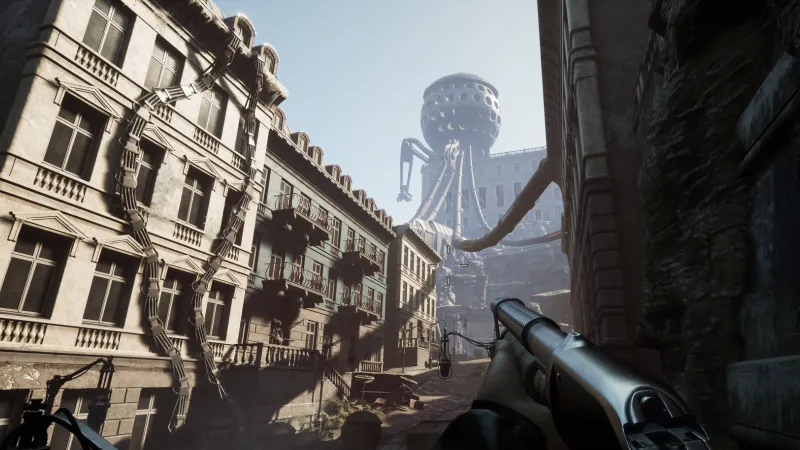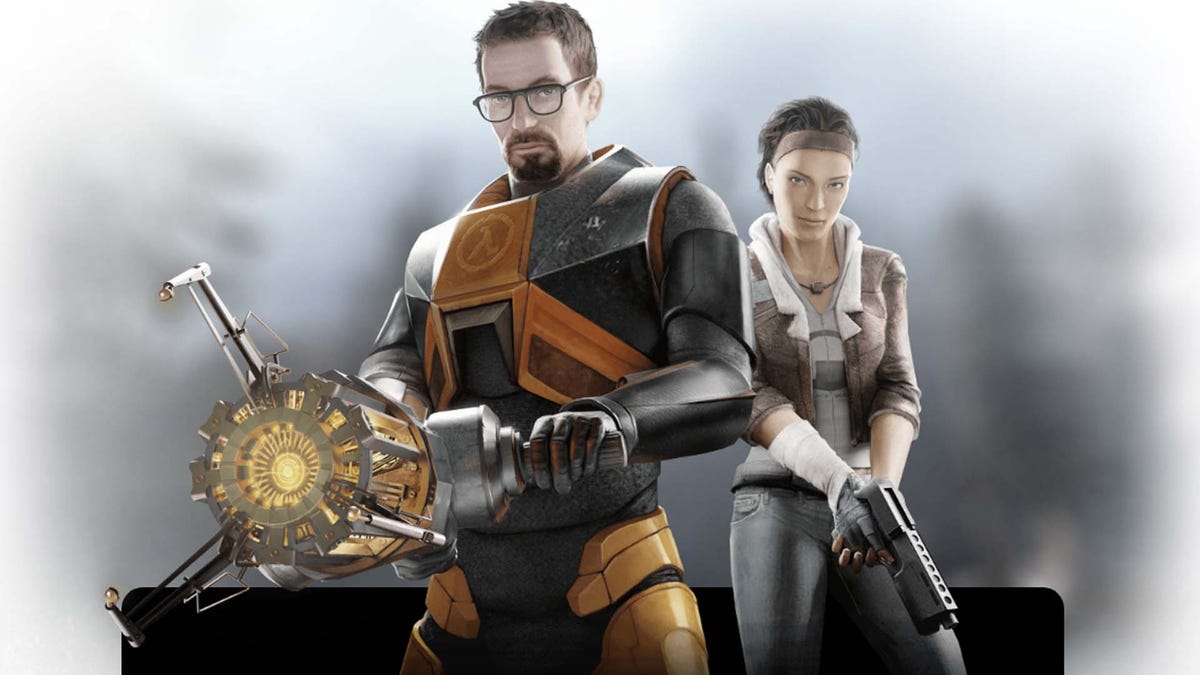Industria’s inspirations are clear from the start: Half-Life 2, David Lynch movies and more. It’s something the Bleakmill team of six mentioned when talking about Industria online that got me excited. You play as Nora, a worker at the East Berlin company Atlas, just before the end of the Cold War. Your loved one goes missing and you set out to find him, only to end up in a parallel dimension where machines have taken over what was once your home. Unfortunately, the four hours following that mysterious and intriguing start doesn’t live up to the opening’s potential. Bleakmill aimed high, and although I thought it might land sometimes, I was unhappy and wished there was more meat on the bone by the end of the credits.
However, one aspect that left me satisfied from start to finish was everything you experience in Industria without touching a controller. Thanks to a world completely outdated by machines, its atmosphere is oppressive and haunting. The score fits and presents odd choral melodies that blend beautifully with the game’s atmosphere. Even its graphics, which sometimes crack like when looking at vistas on the horizon, sold the game well. I just wish that Industria’s gameplay and storytelling would align.

Controlling Nora immediately feels shaky. You can’t move diagonally with the left stick, a minute but that affects lack of input and makes the game feel significantly less fluid as a result. The fact that Industria is a first-person shooter further underscores this problem, as above all I wanted to feel fast and in control when fighting enemies. Of course not.
The opening phase has a distinct lack of weapons, forcing me to rely on an ax to attack enemies and solve environmental puzzles. I was curious to see how these puzzles might develop, but oddly the rest of the game reuses the same ones except for a few. I ran into these puzzles trying to complete objectives that were almost entirely “go here, interact with it, and progress.” It quickly got boring.
Bleakmill has created a handful of different machines to fight with while completing these objectives and I liked the variations between them as they kept me on my toes. A small circular bot sprinted towards me before exploding itself. Another fought like a human with a gun, and another charged wildly at me, waving his arms to attack. These firefights were often tense, and since Industria isn’t keen on throwing out plenty of ammo, I’d often be on the run, rummaging through drawers and cabinets to find more bullets. I had a good time in these gunfights, but wish the actual scenarios were more polished to feel as varied as the robots I shot.
For the first hour, the central narrative mystery is intriguing enough for me to see beyond the relatively simple and boring “go here” goals. There’s even a mid-game twist that I really liked. But as I reached the game’s final moments, I lacked the clarity of storytelling that I was hoping for. In one moment I’m fighting a bunch of robots in what may be the game’s final battle scenario. Then, at breakneck speed, I say goodbye to a friend before leaving for a whole new environment. Here Bleakmill gave the narrative moment it was all leading to and missed the mark. Sure, it explained some character themes and resolved Industria’s question from the opening scenes, but it wasn’t satisfying. It was too rushed to make sense, ended as quickly as it started, and didn’t justify my investment up to that point.
While Industria’s atmosphere was certainly exactly what it wanted, the monotonous gameplay and rushed story left me unsatisfied. Still, I loved the ambiance and setting, and wouldn’t mind if Bleakmill gave it another try – the rest of this world just needs a few more cogs in its machinery.








